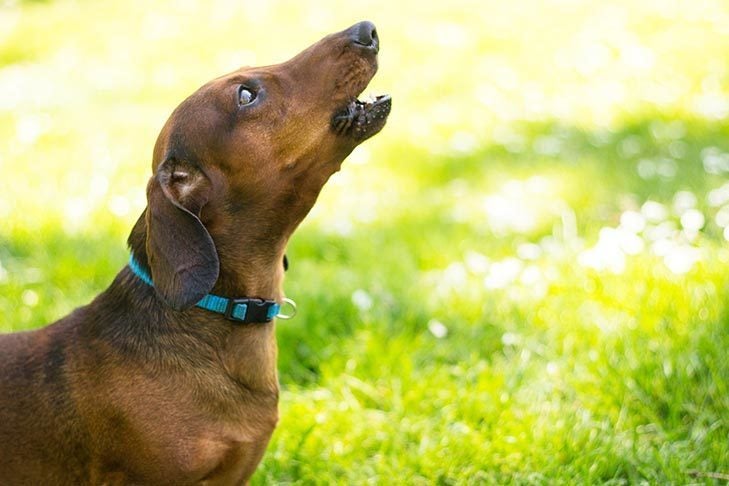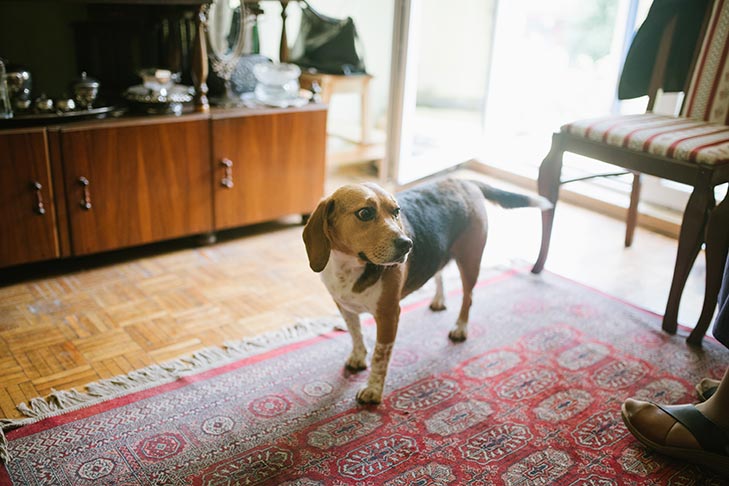Clubs Offering:
|
So often, we hear that a dog just bit someone “out of nowhere.” The truth is, dogs rarely bite with no warning.
Dogs primarily communicate using body language, so it’s important for humans to understand what they are trying to tell us. Learning our dogs’ special ways of communication can reduce their anxiety and prevent potentially dangerous situations from happening. There are several warning signs to look for to help tell if your dog is stressed.
Growling is an obvious way to tell if your dog is uncomfortable. It could mean that someone is in their space, they feel threatened, or that something hurts. It’s not usually meant to be aggressive but it is rather often a warning that your dog feels uncomfortable.
Many people try to discourage their dog from growling. But if a dog gets in trouble for it, they may become more likely to skip future warnings and go straight to a bite. Don’t punish your pup for growling. Instead, respect their space or figure out a different way to get what you want from them. For example, if a dog is growling over food, give them space when they eat in peace. If they are growling over a bone and you need to put the bone away, trade them for a smaller treat so you can take the bone away safely.
Many dogs cannot control their whining when they feel stressed, as it’s more of an automatic response. However, it is a clue for humans that something in the environment is causing anxiety. Barking is similar, in that pups can’t always control it, but they’re trying to tell you that they’re stressed about something. It may, however, depend on the context, as dogs may whine and bark for many other reasons.

There are entire books written on dog body language and “calming signals,” a term developed by Norwegian dog trainer Turid Rugaas. Rugaas realized that dogs have more than 30 ways to avoid stressful situations and try to calm themselves. When pups exhibit these behaviors, they’re trying to diffuse the situation or tell you or another dog that they aren’t a threat.
Stress signs to look for include whale eye (when dogs reveal the whites of their eyes), tucked ears, tucked tail, raised hackles, lip-licking, yawning, and panting. Your dog might also avoid eye contact or look away. This is most commonly seen in a dog that seems “guilty.” However, the pup is actually reacting to your voice and body language and thinks something must be wrong.
Don’t rely solely on body language. Also, some dogs raise their hackles when they are overstimulated or excited, not necessarily when they are stressed or anxious.
When your dog freezes or gets stiff, they are often stressed about something they see. In a training context, this can sometimes be seen as “submission,” but modern dog training practices tell us that the dog is actually shutting down. This can be very dangerous for both you and your pup. It’s a warning sign that the dog is so stressed that they can’t handle the situation, and the next step may be a bite.
When canines are pacing back and forth, it’s a sign they can’t settle down because something is stressing them. If this happens during mealtimes or for short periods, it might not be a big deal. But, noticing when your dog engages in this behavior can give you clues as to what is triggering their anxiety.
In older dogs, pacing may be a sign of dementia. If you start to notice this in your senior pet, talk to your veterinarian right away.

Note: With all of these signs, it all still depends on the individual dog and the context of the situation. For example, some dogs growl or “talk” while playing. It could mean they are getting overexcited and need a break, but it could also just be the way they play. Getting to know when your dog is stressed is key. You should always talk to a professional dog trainer if you have any concerns. Or, consider a trip to your veterinarian if your dog’s behavior changes suddenly.
Signs of Stress and Anxiety in Dogs
It is important to be able to distinguish between normal and anxious dog behaviors, which requires familiarity with your dog’s normal behavior.
Most of the time, relaxed dogs will have round, open eyes; weight on all four legs; a raised tail; and raised, forward-facing ears. They will breathe normally unless they are panting from play or exercise.
Here are some dog anxiety symptoms to watch for.
Just like humans, dogs often pace or make wide circling movements repeatedly when stressed. This can be a sign of panic or nervousness in general. Your dog may also shake or tremble. This often stops once the stressor is gone.
The autonomic nervous system kicks in automatically when stress occurs. This is the “fight, flight, or freeze” response to external fears or stressors. It is an involuntary response system for survival and adapting.
Dogs also have a sympathetic nervous system. When a dog is stressed, this system releases adrenaline and increases their heart rate and respiratory rate, which is often seen as panting.
Dogs do not only yawn when they are tired—they also yawn when they’re nervous. Usually, these yawns are frequent and longer than when they are tired.
A dog’s nervous system is activated by stress and causes drooling and frequent lip-licking or “lip-smacking.” This is also seen when a dog has nausea and may have something to do with activation of the gastrointestinal tract by the nervous system.
Dogs engage in a number of behaviors to help calm themselves, but these can become compulsive and destructive when they are really stressed. Common compulsions include licking themselves excessively, licking floors or walls, barking excessively, or chewing objects compulsively.
Often, this behavior can lead to skin infections from overgrooming, foreign body ingestion, upset stomach from ingesting things, digging behavior (holes, bedding, rugs), or destroying their crates in order to break free. Crying or barking can also be a self-soothing behavior in anxious dogs, or a way to alert us to their stress.
Other signs to look out for
Shaking You might see your dog give a full-body shake. Think about what was happening just before they did this, as itâs likely that they found it challenging and are now âshaking it offâ.
Panting Some dogs will start to pant â completely unrelated to temperature or exercise. Unsure dogs might also tremble or shiver even when they arenât cold.
Pacing Your dog might start to pace or be unable to stay still or settle down. They might also be very easily startled and jumpy.
Jumping, pawing or mouthing Your dog might become suddenly very active and seek attention from you by jumping up, pawing at you, or even mouthing or mounting when they wouldnât normally. They might find it difficult to follow well-known requests, like âsitâ because the stress response in their body makes it harder to stay still or concentrate.
You might find your dog grabs a treat from your hand when they would usually take it gently. They might even refuse to take it at all.
These may also be signs of frustration, as well (or instead of) anxiety â see the section at the end of this page for advice on that.
Hiding Your dog might move away or actively try to avoid whatever is worrying them. Bear in mind that in some situations it might be you that they are worried about, or someone you are with, such as a veterinary surgeon.
Some dogs will try to hide or withdraw from a situation. Others might bolt when frightened, which can be highly dangerous.
More signs a dog could be anxious When dogs try to find a way to cope with situations that they are finding challenging, they might perform behaviours that would be normal in different circumstances.
For example, a dog might suddenly stop, sit down, and start scratching with intensity when something in their surroundings is worrying them. They could also start sniffing about and licking themselves repeatedly.
10 SIGNS of STRESS in DOGS How to Help With Anxiety
Recognising fear or anxiety in your dog can help you resolve or avoid situations they find difficult.
If you can recognise the first signs of fear or anxiety in dogs, then youâll be able to help your dog avoid the things that worry them and keep clear of potential conflicts.
This will help prevent your dog from developing more established fears and keep everyone in the family, including your dog, feeling safe.